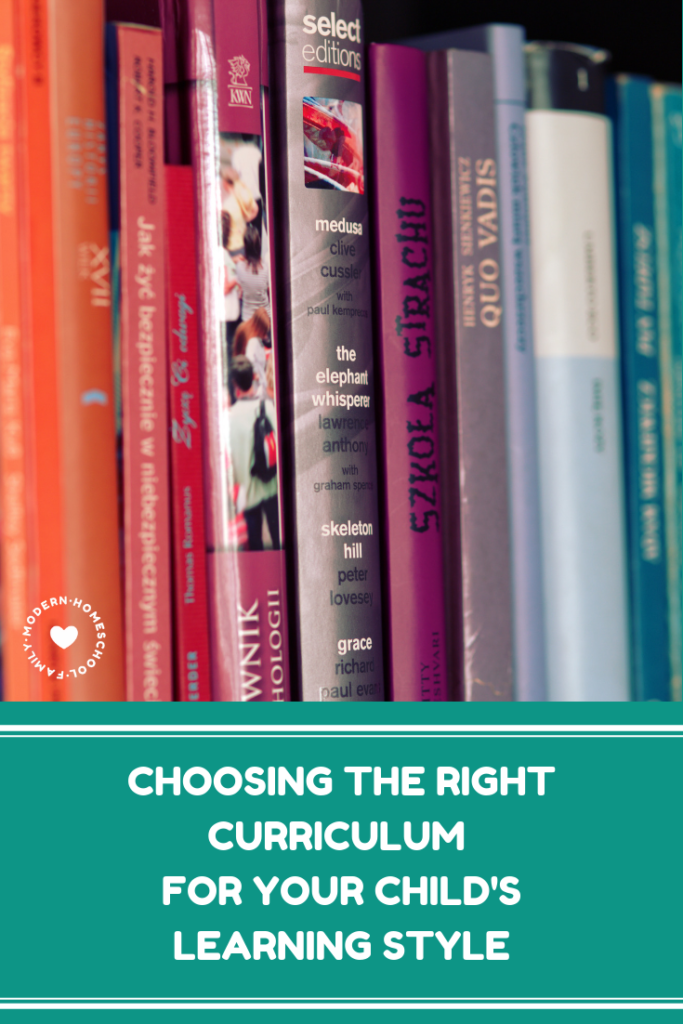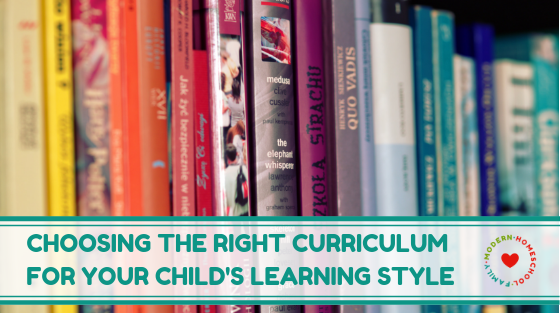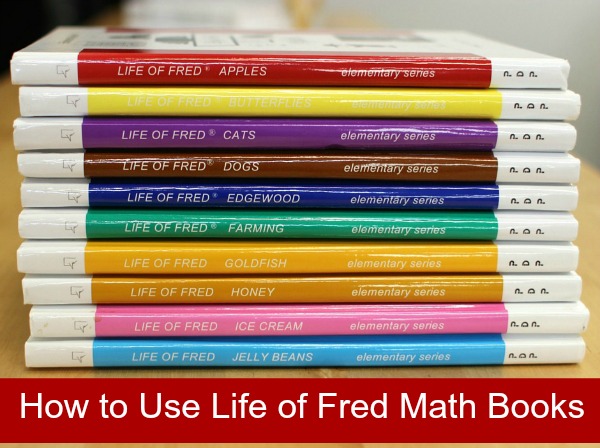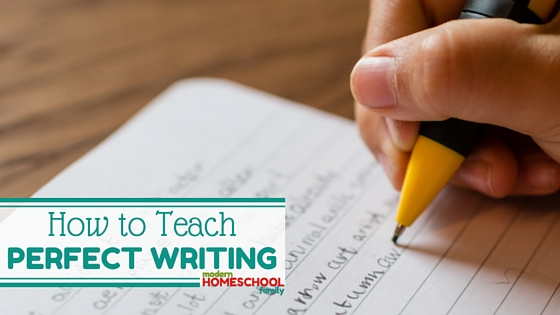The beautiful thing about homeschooling is the wide variety of curriculum options available. That can also be the most overwhelming thing about homeschooling. With so many options, choosing one can be a source of anxiety. Picking the wrong curriculum can create a homeschool environment that’s not enjoyable for anyone.
One important way to make sure your homeschool works for you and your child is to know her learning style. No matter how great your homeschool plans and lessons are, if they don’t fit with the way she learns best, it’s likely she will struggle and become frustrated. Here are some tips for choosing the right homeschool curriculum for your child’s learning style.
How to Determine Your Child’s Learning Style
The first step in choosing the right homeschool curriculum for your child’s learning style is to determine what your child’s learning style is.
Homeschool On is a great resource. It offers a free learning style quiz that will help you decide how to best teach your child. Answer the questions for each of your children, and structure your teaching accordingly for the best results.
Don’t jump too quickly based on those results, though. It’s best to observe your child over the course of time to discover how he expresses himself and his interests then use those observations in combination with the quiz results. Here are common characteristics of each learning style:
Common Characteristics of Visual Learners
- Excels in art and other visual activities
- Enjoys books that include illustrations
- Good a recognizing faces
- Works best when provided an example
- Good a reading maps and charts
- Likes to play with construction toys and jigsaw puzzles
- Better than most at observing details
- Easily distracted by visual stimulation
- Struggles with:
- Creative writing
- Word problems
Common Characteristics of Auditory Learners
- Excels in music and other auditory activities
- Frequently sings or hums
- Follows verbal instructions well
- Enjoys talking
- Listens to all instructions before starting a task
- Asks a lot of questions
- Learns new words phonetically
- Excellent memory for names, dates and trivia
- Likes word games
- Usually able to learn times tables easily
- Struggles with:
- Editing written work
- Attention to detail in math
- Struggles with:
Common Characteristics of Kinesthetic Learners
- Highly active; doesn’t sit still for too long
- Uses lots of gestures and body language when talking
- Needs to touch and feel
- Good a mimicking others
- Enjoys “moving” activities, such as sports and dance
- Usually gets started on a task quickly
- Excellent muscle coordination
- Distracted when needs to sit still
- Excellent at disassembling and reassembling gadgets
- Struggles with:
- Phonics
- Analytical work
Choosing the Right Homeschool Curriculum for Your Child’s Learning Style
Once you determined your child’s learning style, read the section below that most fits how she learns. Use the resources and tips to formulate a successful homeschool curriculum!
Choosing the Right Homeschool Curriculum for Visual Learners
According to Wikipedia, “Visual learning is a style in which a learner utilizes graphs, charts, maps and diagrams.”
They need to see the concepts in action in order to fully grasp them. With this information, you can tailor your homeschool lessons to include showing your child how to master the different concepts.
Worksheets work well for visual learners, who often forget instructions or lessons they hear. Having everything right in front of them is always best. (Be sure to check out all of the resources right here at Modern Homeschool Family. We offer plenty of free worksheets for homeschoolers!)
LearningScience.org offers free tools to help your visual learner see how things work. He can create graphs, use a virtual microscope and more at this website.
Toys and games may also help you visual learner master concepts. Playing with money, for example, is much easier to understand and remember than you telling him that a quarter is worth 25 cents.
Learning and Study Tips for Visual Learners:
-
- Give written instructions
- Use different colors for note taking
- Make and use flashcards
- Create charts and diagrams
- Use board and memory games
- Use books with illustrations
- Use videos
Choosing the Right Homeschool Curriculum for Auditory Learners
Auditory learners process information best by hearing it. They use listening and speaking to thrive in school settings. They can usually detect changes in tone to really understand what the speaker is saying.
To help your auditory learner thrive, prepare lessons that involve you reading aloud. Lectures are great for the auditory learner. Audiobooks are another great way for auditory learners to understand material.
Audible from Amazon can be a great resource for your auditory learner. They have a ton of non-fiction books like biographies for your student to listen to. One of my favorite resources for audio books is Hoopla Digital. Available through many public libraries, you can access thousands of audiobooks for free!
Songs that bring about learning concepts also help auditory learners retain important information. Singing the days of the week or multiplication facts is likely to help an auditory learner remember them than writing it all down.
Learning and Study Tips for Auditory Learners:
-
- Read books and study material aloud
- Repeat study notes aloud
- Make up jingles for memorizing facts
- Provide instructions orally
Choosing the Right Homeschool Curriculum for Kinesthetic Learners
Hands-on and physical activities are the methods in which kinesthetic learners learn best. They can’t sit still long, so lectures or worksheets don’t interest them.
Take walks daily with your kinesthetic learner. Let them be active, and incorporate learning activities into this outside time. Ask them to count the leaves on a branch, or discuss the process of photosynthesis with them.
LEGOs and other building materials are great for STEM learning in kinesthetic learners. Give them the freedom to construct as they wish, asking questions and including learning opportunities in their play.
Flashcards break up the monotony of reading or listening to you teach for kinesthetic learners. Allow your child to help create the flash cards too!
Learning and Study Tips for Kinesthetic Learners:
-
- Use a squeeze/stress ball while studying
- Create practice tests to use
- Change positions while doing written work (stand, lay down, etc.)
- Incorporate art or science experiments
- Incorporate role playing activities
Hopefully these tips and techniques will help you successfully cater to your child’s individual learning style. It’s not enough to homeschool your child – you need to teach your child in the best ways for her to learn. Choosing the right homeschool curriculum for your child’s learning style will help your child learn better and make homeschooling much more enjoyable for the both of you!

Sources: Independent Education Consultants (UK), Grade Power Learning, HSLDA





